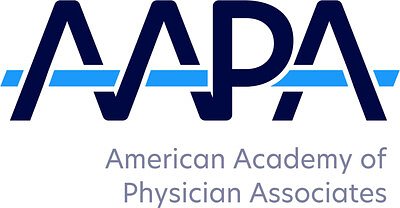
Rural Healthcare Gets a Boost: Billions Tied to PA Practice Modernization
A $50 billion federal program is incentivizing states to expand the role of Physician Associates, potentially unlocking critical access to care in underserved rural communities. But the path isn’t without hurdles.
Rural Healthcare Gets a Boost: Billions Tied to PA Practice Modernization
WASHINGTON, D.C. – November 06, 2025 – A landmark federal investment of $50 billion is poised to reshape rural healthcare access, with a surprising key component: the modernization of practice laws for Physician Associates (PAs). The Rural Health Transformation (RHT) Program, authorized earlier this year, is now directly linking federal funding to states' willingness to grant PAs greater autonomy, potentially unleashing a wave of legislative changes across the country.
A Funding Incentive with a Clear Goal
The RHT Program, designed to bolster rural healthcare infrastructure, allocates funding in two phases. Half of the $50 billion will be distributed equally among all states, while the remaining half is tied to performance metrics. Significantly, the Centers for Medicare & Medicaid Services (CMS) has explicitly incorporated the American Academy of Physician Associates' (AAPA) state practice environment rating scale into the scoring framework. This means states currently restricting PA practice stand to gain, or lose, substantial funding based on their willingness to modernize regulations.
“This is a game-changer,” says one healthcare policy analyst familiar with the program. “For years, PAs have been underutilized in many states due to outdated laws. Now, there’s a direct financial incentive to remove those barriers and allow them to practice to the full extent of their training.”
CMS scoring allows for a potential 100 points for states transitioning to “optimal” practice environments for PAs. This includes removing requirements for physician supervision, granting full prescriptive authority, and allowing PAs to practice independently with experience.
South Carolina at the Forefront – and Facing Pushback
One state currently navigating this shift is South Carolina. Senate Bill S.44, if passed, would significantly modernize PA practice laws, allowing experienced PAs to practice independently with an attestation statement, assume legal responsibility for their care, and expand their prescriptive authority. The bill aims to address critical healthcare shortages, particularly in the state’s 41 designated health professional shortage areas.
“The need is acute,” explains a representative from the South Carolina Academy of PAs (SCAPA). “We have communities where accessing primary care is a significant challenge. This bill would help us put qualified providers on the ground where they’re needed most.”
However, the bill isn’t without opposition. The South Carolina Medical Association (SCMA) argues that removing physician supervision could compromise patient safety. “We believe a team-based approach, with physicians providing oversight, is essential,” says one SCMA representative. “PAs are valuable members of the healthcare team, but they shouldn’t be practicing independently without a physician’s guidance.”
A National Trend: Expanding PA Roles
The push for PA practice modernization isn’t limited to South Carolina. Across the country, states are reevaluating regulations governing PAs, driven by workforce shortages, rising healthcare costs, and a growing recognition of PAs’ capabilities.
“The healthcare landscape is changing,” explains a healthcare administrator in North Carolina, which recently joined the PA Licensure Compact. “We need to be flexible and adapt to new models of care. PAs can play a vital role in expanding access to care, especially in rural and underserved areas.”
The trend is also driven by the economics of healthcare. PAs generally have lower training costs and salaries than physicians, offering a cost-effective solution to workforce shortages. Their broad, generalist medical education allows them to adapt to various clinical settings and patient needs, making them a versatile resource for healthcare systems.
The AAPA has been instrumental in advocating for these changes, lobbying state and federal lawmakers, and educating the public about the benefits of expanding PA roles. The RHT Program, with its direct link to federal funding, provides a powerful new lever for AAPA to advance its policy agenda.
“This is a pivotal moment for the PA profession,” says a policy analyst familiar with AAPA’s advocacy efforts. “The RHT Program has created a clear incentive for states to modernize their laws. We’re optimistic that this will lead to significant improvements in healthcare access and quality, particularly in rural communities.”
The success of the RHT program and the modernization of PA practice laws remains to be seen. However, the clear financial incentive and the growing recognition of PAs’ capabilities suggest a promising future for the PA profession and the communities they serve.
📝 This article is still being updated
Are you a relevant expert who could contribute your opinion or insights to this article? We'd love to hear from you. We will give you full credit for your contribution.
Contribute Your Expertise →